Henna drawings on hand

The art of tattooing is popular these days. Drawings with lions, wolves and other animals, as well as various inscriptions, skeletons, skulls and more are especially in demand among people. But not everyone knows about this type of underwear painting, like mehendi. It is about him that will be discussed in this article.

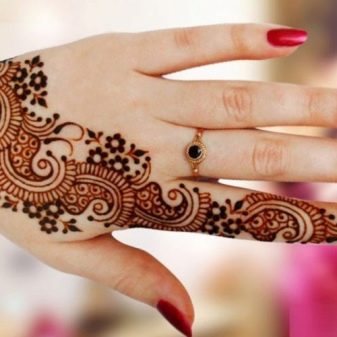
Peculiarities
Mehendi is a body painting that can be done in a wide variety of styles. Similar drawings are made using henna, which was previously used to provide the skin with protection from the sun's rays, and it was applied with spots. A little later, in the Middle East and Southeast Asian regions, intricate designs began to be applied instead of spots. This decorative tradition is called mehendi.
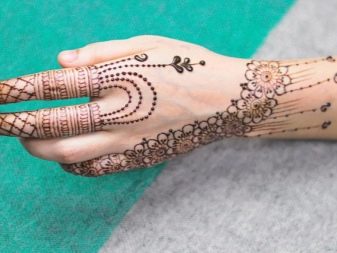

Varieties of such tattoos were applied to the body in the process of religious rituals that were relevant to the Asian and Arab tribes. There, painting often adorned the bodies of brides. Interestingly, this tradition has remained in a number of countries.


At the present time, such wearable drawings are applied not so much because of traditions, but because of the desire of people to decorate themselves, somehow stand out from the rest, to emphasize their originality. That is, the purpose of such patterns is in many ways similar to the function of ordinary tattoos. However, such drawings have a number of peculiarities.
- So, unlike a real tattoo, they only last a couple of weeks. For some, this is good, because the drawing does not get bored and comes off the skin absolutely painlessly.And for someone, on the contrary, this nuance seems to be a minus, since a person wants the drawing on his body to linger for a longer amount of time. Due to the fragility of such wearable drawings, we can advise those who still doubt whether he wants to see this or that picture on his body on an ongoing basis or not. If the answer after the drawing of the mehendi turns out to be negative, then the person will not have to regret his decision for a long time, because the image will soon come off the skin, that is, you will not have to turn to a specialist for this.
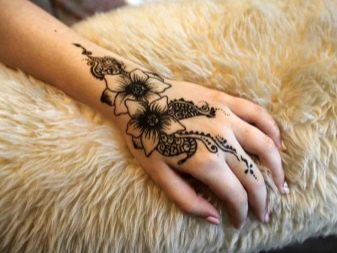
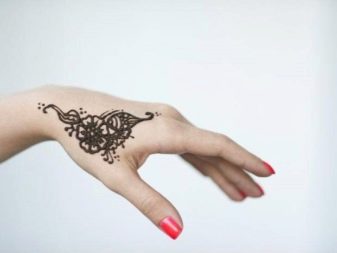
- Another feature of such tattoos is that they are almost completely safe. This can be easily explained: when applying a pattern with henna, there is no damage to the skin, which eliminates the risk of infection or other problems.
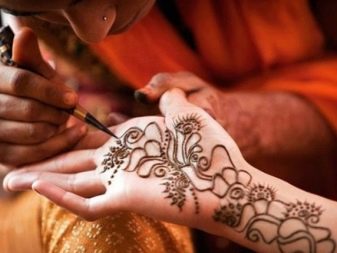
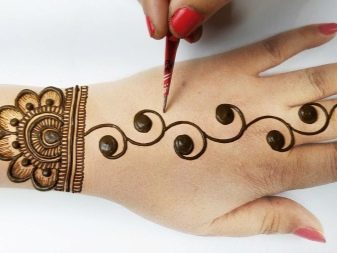
- However, it is not worth excluding the possibility of an individual body's reaction to paint. If you apply the drawing yourself or resort to the help of masters whose qualifications can be questioned, it is quite possible that you have allergic edema. The problem lies in the fact that the compositions of low-cost, low-quality paints that are used for drawing on the hand often contain not only natural pigment, which is obtained from the foliage of Lawsonia, but also other impurities. They are added to the paint, as a rule, in order to make the drawing bright and durable, however, these substances themselves in some cases can cause an allergic reaction in people.

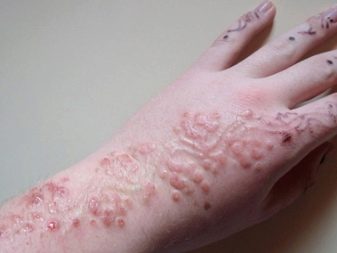
Best ideas and sketches
A variety of elements and plots are used to select a future picture.
Birds
A variety of birds are often found in mehendi. Such drawings carry a certain meaning. They symbolize freedom, flight, dreaminess. However, a more accurate interpretation largely depends on which bird is depicted when drawing.
- The peacock is traditionally associated with beauty, it is a symbol of happiness and financial success.

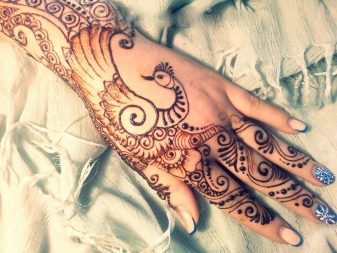
- The image of a swan has a similar interpretation, which, among other things, symbolizes innocence, purity and femininity.
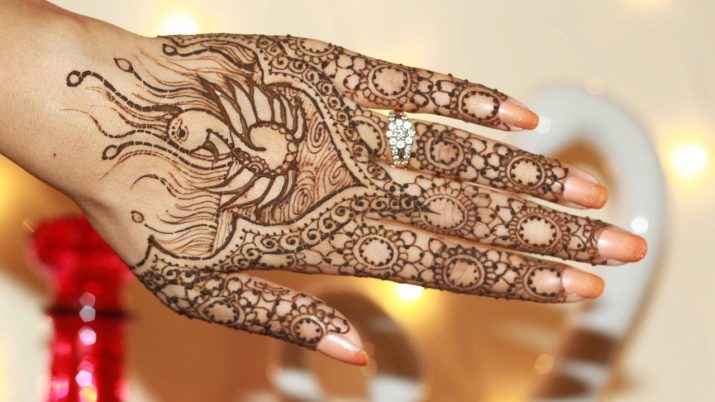
- The swallow is a symbol of hope, expectation of updates, happiness and success coming into life.

- But the owl is traditionally associated with wisdom, reason and flexibility of mind. It is interesting that earlier such tattoos were applied to their bodies only by those people who were distinguished by their influence and wealth.
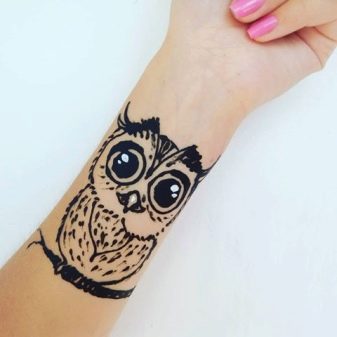
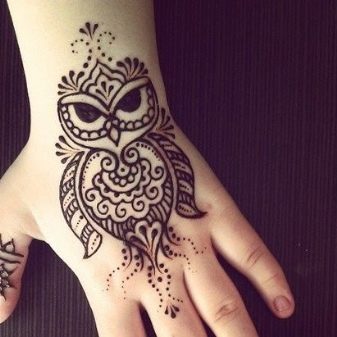
Floral
Floral motifs are found in all mehendi styles, be they Arabic, Asian, Indian or Moroccan. Such patterns can be both complex and intricate weaves, and lighter.
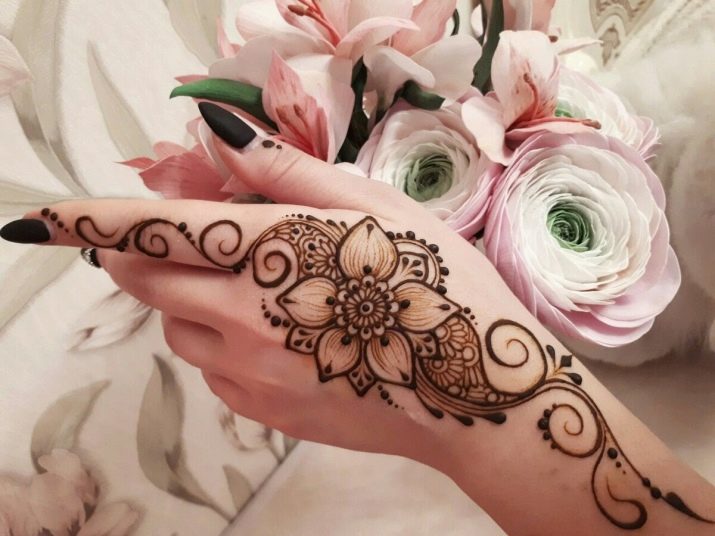
In general, flower drawings are the most common in this regard. Traditionally, they are considered a symbol of softness, tenderness and femininity. But if flowers are depicted in combination with fruits, then this means joy and happiness. In addition, many believe that flowers are a symbol of falling in love, the beginning of a new life.
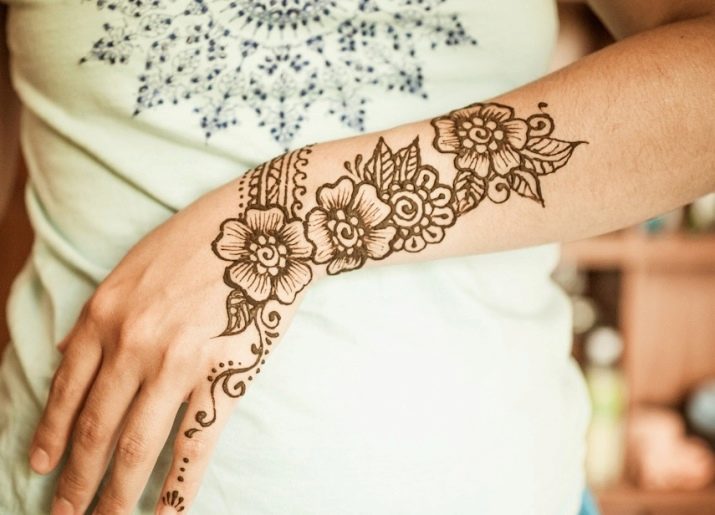
Paisley
Intricate Turkish cucumber motifs, also known as paisley or buta, signify fertility, forward movement. Previously, such drawings were applied only by noble people, and in Indian culture they were painted on the bodies of the spouses, thus wishing them all the best. In the latter case, such images, as a rule, were supplemented with images of dots, which symbolized the girl's bright feelings for her lover.
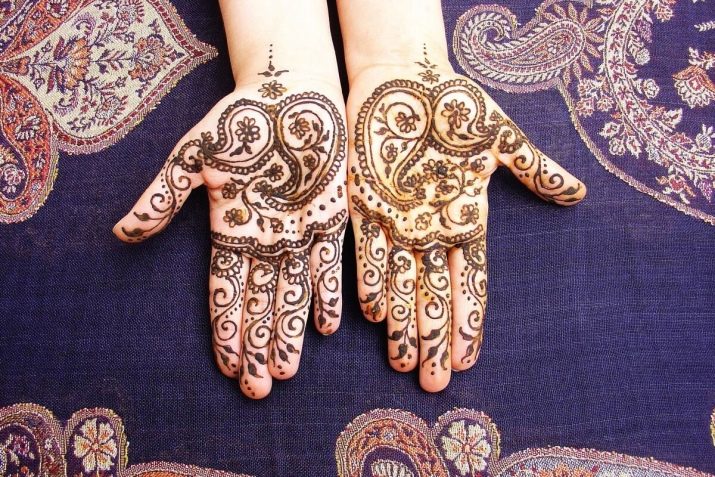
Mandala
Mandala is, according to Indian culture, the personification of the universe. It is a beautiful circle pattern with squares, triangles and smaller circles inside. Such a drawing is traditionally a symbol of wisdom and maturity, it means spiritual enlightenment and the desire for balance. It is believed that if such a pattern is applied in the area of the palms, it will help harmonize all the chakras.
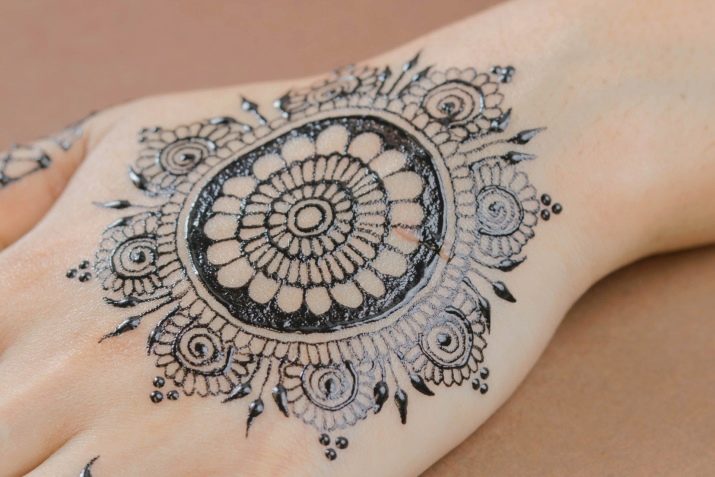
Butterflies
You can also draw a mehendi butterfly on your hand.Some believe that this insect is a symbol of frivolity and some infantilism, but this opinion is erroneous. For example, in ancient times, it was perceived as a symbol of immortality. Some peoples interpreted the image of this insect as something that can bring good luck and success into life. However, the overall meaning of such a pattern is beauty, free flight and daydreaming.
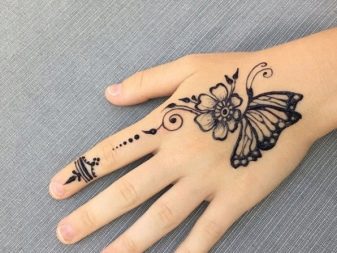
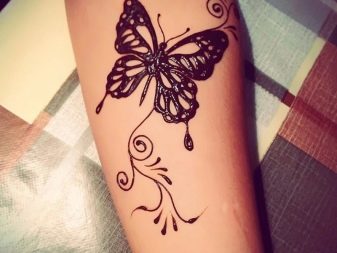
Note that other insects, be it a scorpion or a dragonfly, may also be present. The meaning of such an image will completely depend on what kind of creature is depicted on it.
Moon and stars
The moon in many cultures is a symbol of feminine energy, unearthly beauty and even something divine and majestic. In Indian literature, in particular in poetry, one can often find turns, where beautiful girls are compared to the full moon in the firmament.
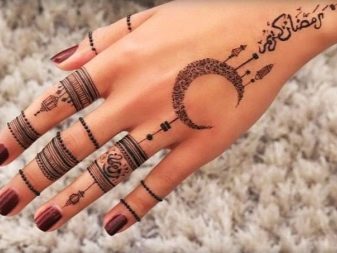

In tattoos, her image is usually combined with a pattern in the form of stars, which are the personification of hope and divinity.
Sahasrara
Sahasrara is known to many as the crown chakra. From the point of view of yoga, it can be considered as the energy point of the non-physical body. By itself, such a drawing is the personification of the purity of consciousness, it is used to symbolize enlightenment.
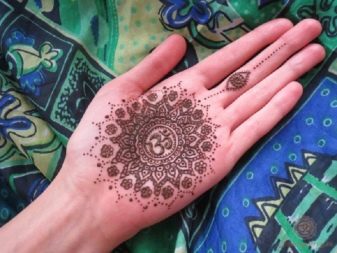
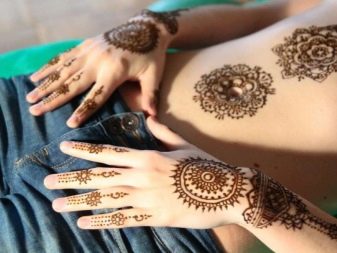
Location options
A mehendi tattoo can be placed on the arm in any way - for example, on the upper part, in the shoulder area or on the hand. It all depends on the size of such a pattern.
So, many prefer large patterns that look best on the sleeves. Such patterns often begin in the area of the hand or even fingers, and then "creep" up to the biceps, shoulder and forearm.

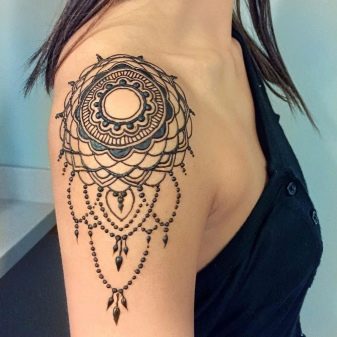
Less flashy patterns, however, look best around the wrist, especially as bracelets. They can also be placed in the area of the fingers, but in this case there is a high risk that the tattoo will wear off somewhat faster than originally planned.
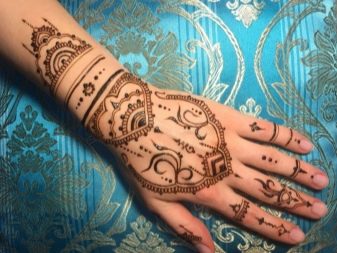
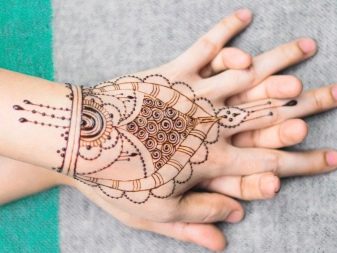
What is necessary?
Applying a mehendi drawing on your own is not such an easy task as it might seem at first glance.
- The most difficult thing here is not even the drawing itself, but the selection of the material, in particular, paste, which is easiest to find and buy in salons where such drawings are applied. It should be resistant, but you should not chase after its cheapness. Study the formulations carefully to avoid the occurrence of an allergic reaction. Do not forget about the shelf life of the paste, ideally it should not exceed 3 months.

- In the absence of drawing skills, we recommend purchasing special templates., which you can simply paint in empty places and end up with a beautiful drawing.
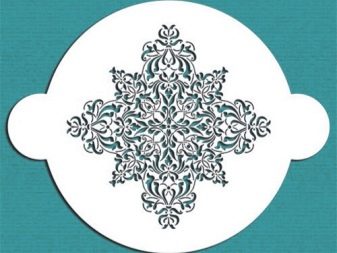
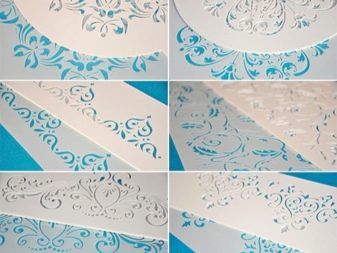
- To apply the same pattern, in addition to the paste, you will need wooden sticks, a paper cone, toothpicks, brushes. If desired, you can use a syringe without a needle.
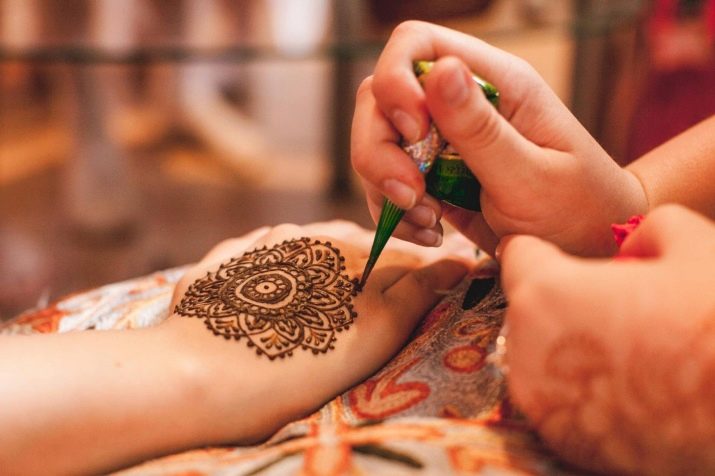
How to do it yourself?
To apply the drawing yourself correctly, first you should conduct an allergy test. To do this, you need to apply paint to the back of your hand. After half an hour, evaluate the skin reaction: if there are no allergy symptoms, there is no itching or redness, then everything is fine.
- Immediately before applying the pattern to the hand, the skin must be prepared by degreasing and preferably removing excess hair.
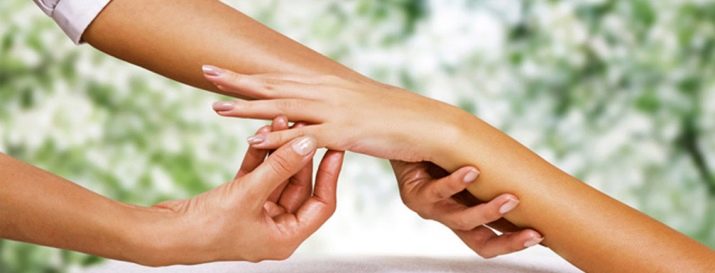
- After that, attach a template and a file for papers to the desired place and outline the picture along the contour, using an ordinary pencil or pen for this. Next, the file is pressed against the skin in order to transfer the pattern onto it.
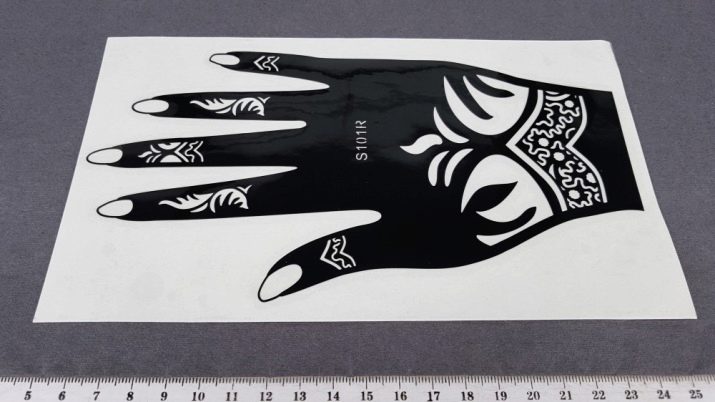
- After that, you can start painting the drawing with henna. This can be done using any tools that are convenient for you to work with. If you accidentally smear yourself with paint, then this is not a problem: moisten a cotton pad with water and remove excess henna with it.
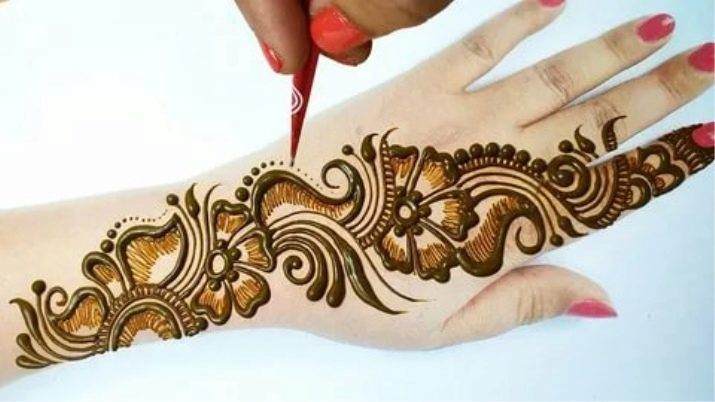
- This pattern dries quickly enough - about an hour. However, after the application process, it is not worth smearing it, like an ordinary tattoo, with ointment or cream.
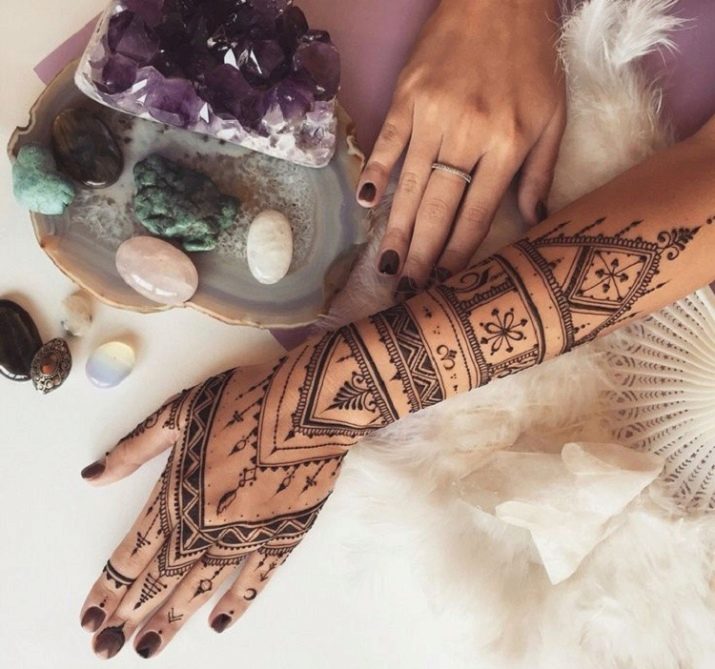
- Separately, we note that henna is quite firmly adhered to the skin, and therefore it will be problematic to get rid of the image in a short time. The drawing itself will come down with time. This can only be facilitated by regular washing.
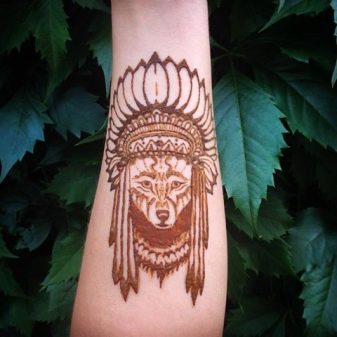

How beautiful henna painting is, see the video below.








